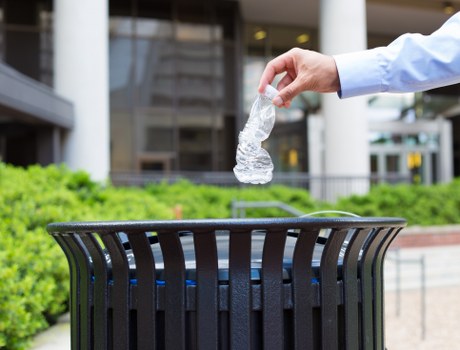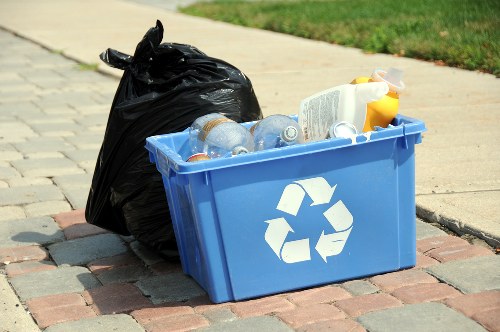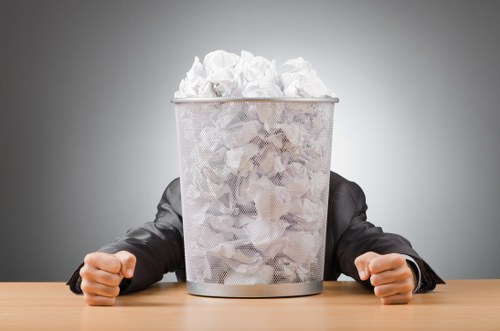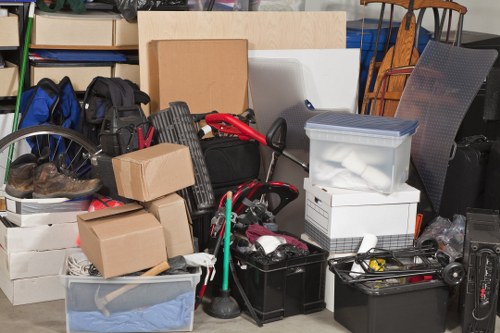Mattress Removal and Collection in Commercial Waste Collection

In today’s fast-paced commercial environment, efficient waste management is crucial for maintaining cleanliness and sustainability. One significant aspect of commercial waste collection is mattress removal. Mattresses are bulky and can pose environmental hazards if not disposed of properly. This article delves into the intricacies of mattress removal and collection within the realm of commercial waste management, providing valuable insights for businesses seeking responsible disposal solutions.
Proper mattress disposal is not only a matter of hygiene but also of environmental responsibility. Commercial establishments, such as hotels, hospitals, and office buildings, often accumulate used mattresses that need to be removed safely and efficiently. Understanding the best practices for mattress removal can help businesses minimize their environmental footprint and comply with local regulations.
Moreover, with the increasing emphasis on sustainability, many companies are looking for eco-friendly mattress disposal options. Recycling programs and donation initiatives are becoming more popular, allowing businesses to contribute positively to the community while managing their waste effectively.

The Importance of Professional Mattress Removal
Commercial waste collection involves handling large volumes of waste, and mattresses are among the most challenging items to dispose of. Professional mattress removal services offer several advantages over DIY methods, ensuring that mattresses are handled safely and in compliance with environmental standards.
Expert Handling: Professionals are trained to handle bulky items like mattresses, reducing the risk of injury and property damage.
Compliance with Regulations: Licensed removal services are aware of local disposal regulations and ensure that mattresses are processed correctly, avoiding potential fines and legal issues.

Environmental Impact of Improper Mattress Disposal
Disposing of mattresses improperly can have severe environmental consequences. Mattresses often contain materials that are not easily biodegradable, contributing to landfill waste. Additionally, certain components, like flame retardants and adhesives, can leach into the soil and water, causing pollution.
By opting for proper mattress removal and collection, businesses can significantly reduce their environmental impact. Recycling initiatives allow for the recovery of materials such as steel, foam, and fabric, which can be reused in manufacturing processes. This not only conserves resources but also reduces the demand for new raw materials.
Furthermore, responsible disposal helps in minimizing greenhouse gas emissions associated with landfill decomposition. Methane, a potent greenhouse gas, is released when organic materials break down anaerobically in landfills. Proper mattress disposal can help mitigate this issue, contributing to climate change efforts.

Steps Involved in Commercial Mattress Removal
1. Assessment and Planning
The first step in effective mattress removal is assessing the volume and type of mattresses that need to be disposed of. This involves evaluating the condition of the mattresses and determining the most suitable disposal method, whether it be recycling, donation, or disposal at a landfill.
2. Scheduling the Pickup
Once the assessment is complete, scheduling a convenient pickup time is essential. Professional waste collection services offer flexible scheduling to accommodate the operational hours of commercial establishments, ensuring minimal disruption to business activities.
3. Safe Handling and Transportation
Proper handling during transportation is critical to prevent damage to property and ensure the safety of personnel. Professionals use specialized equipment and vehicles designed to transport bulky items like mattresses efficiently.
4. Recycling or Disposal
After transportation, mattresses are either recycled or disposed of according to their condition. Recycled mattresses have their components separated and processed for reuse, while those unsuitable for recycling are disposed of in environmentally friendly landfills.

Benefits of Mattress Recycling Programs
Mattress recycling programs offer numerous benefits for businesses and the environment. By participating in these programs, companies can enhance their sustainability efforts and improve their corporate social responsibility profile.
- Resource Conservation: Recycling conserves natural resources by reusing materials that would otherwise be wasted.
- Cost Savings: Some recycling programs offer incentives or reduced disposal fees, leading to potential cost savings for businesses.
- Community Goodwill: Donating mattresses to those in need fosters community goodwill and enhances the company’s reputation.
- Regulatory Compliance: Participating in recycling programs helps businesses comply with environmental regulations, avoiding penalties.
Implementing a Recycling Strategy
To effectively implement a mattress recycling strategy, businesses should collaborate with reputable waste collection services that specialize in mattress recycling. This ensures that the process is streamlined and aligned with sustainability goals.
Additionally, educating employees about the importance of proper mattress disposal and recycling can foster a culture of environmental responsibility within the organization.
Challenges in Mattress Removal
While mattress removal offers significant benefits, it also presents several challenges that businesses must navigate. Understanding these challenges is crucial for developing effective waste management strategies.
Logistical Issues
The bulky nature of mattresses makes transportation and handling more complex compared to regular waste items. Limited access to disposal sites and transportation constraints can further complicate the removal process.
Cost Considerations
Professional mattress removal services may involve higher upfront costs. However, these costs are often offset by the long-term benefits of efficient waste management and potential savings from recycling programs.
Regulatory Compliance
Staying abreast of local and federal regulations regarding mattress disposal is essential. Non-compliance can result in hefty fines and damage to the company’s reputation.
Choosing the Right Mattress Removal Service
Selecting a reliable mattress removal service is critical for effective waste management. Here are key factors to consider when choosing a service provider:
- Reputation and Reviews: Research the service provider’s reputation through reviews and testimonials to ensure reliability and quality.
- Licensing and Certification: Ensure that the service is licensed and certified to handle mattress disposal according to local regulations.
- Recycling Capabilities: Choose a provider that offers comprehensive recycling options to maximize environmental benefits.
- Pricing Structure: Compare pricing models to find a service that offers transparency and value for money.
- Customer Support: Responsive and helpful customer support can make the removal process smoother and more efficient.
By considering these factors, businesses can partner with a mattress removal service that aligns with their waste management goals and sustainability initiatives.
Eco-Friendly Disposal Methods
Adopting eco-friendly disposal methods for mattresses is a proactive step towards sustainable waste management. Here are some of the most effective methods:
- Recycling: Breaking down mattresses into recyclable materials such as steel, foam, and fabric reduces landfill waste and conserves resources.
- Donation: Donating gently used mattresses to shelters and charitable organizations can extend their lifespan and benefit those in need.
- Composting: Organic components of mattresses can be composted, though this method requires specialized facilities.
- Ash Recycling: Incinerating mattresses in controlled environments can recover energy and reduce waste volume.
Implementing these eco-friendly methods not only benefits the environment but also enhances the company’s sustainability profile.
Innovative Technologies in Mattress Recycling
Advancements in recycling technologies have revolutionized mattress disposal. Innovative methods allow for more efficient separation and processing of mattress materials, increasing the viability of recycling programs.
Mechanical Recycling
Mechanical recycling involves shredding mattresses into smaller components, which are then sorted and processed for reuse. This method is effective for recovering materials like metal springs, foam, and fabric.
Chemical Recycling
Chemical recycling breaks down complex materials into their chemical constituents, enabling the recovery of high-purity materials that can be used in various manufacturing processes.
Regulatory Framework for Mattress Disposal
Understanding the regulatory framework governing mattress disposal is essential for businesses to ensure compliance and avoid legal issues. Regulations vary by region, but generally focus on environmental protection and sustainable waste management practices.
Local Regulations and Ordinances
Local governments often have specific ordinances regarding the disposal of bulky waste items like mattresses. These regulations may dictate the acceptable disposal methods, collection schedules, and penalties for non-compliance.
Federal Environmental Standards
At the federal level, environmental standards may govern the materials used in mattresses and the permissible disposal practices. Compliance with these standards ensures that businesses contribute to national sustainability goals.
Industry Best Practices
Adhering to industry best practices for waste management not only ensures compliance but also promotes operational efficiency and environmental stewardship. Best practices include regular waste audits, implementing recycling programs, and training staff on proper disposal techniques.
Case Studies: Successful Mattress Removal Programs
Examining successful mattress removal programs can provide valuable lessons and inspiration for businesses looking to enhance their waste management strategies.
Hotel Chains
Numerous hotel chains have implemented comprehensive mattress recycling programs, partnering with specialized waste collection services to ensure that outdated mattresses are recycled or donated appropriately. These initiatives have not only reduced landfill waste but also improved the hotels' sustainability credentials.
Healthcare Facilities
Healthcare facilities, which frequently replace mattresses to maintain hygiene standards, have benefited from streamlined removal services. By adopting recycling programs, these facilities manage waste more effectively while adhering to stringent health and safety regulations.
Corporate Offices
Large corporate offices with substantial waste output have optimized their mattress removal processes by integrating professional waste collection services into their overall waste management strategy. This integration has led to cost savings, increased recycling rates, and enhanced corporate responsibility.
Future Trends in Commercial Mattress Removal
The landscape of commercial waste management is continually evolving, and mattress removal is no exception. Emerging trends are shaping the future of mattress disposal, making it more efficient and environmentally friendly.
- Increased Automation: Technological advancements are leading to more automated recycling processes, improving efficiency and reducing labor costs.
- Circular Economy Models: Emphasizing the reuse and recycling of materials, circular economy models aim to minimize waste and promote sustainability.
- Green Certifications: Businesses are increasingly seeking green certifications for their waste management practices, highlighting their commitment to environmental responsibility.
- Advanced Materials: The development of biodegradable and recyclable mattress materials is reducing the environmental impact of mattress disposal.
Integration with Smart Waste Management Systems
Smart waste management systems leverage technology to optimize the collection and processing of waste, including mattresses. These systems use data analytics and IoT devices to monitor waste levels, schedule pickups efficiently, and enhance operational transparency.
By integrating smart systems, businesses can achieve more precise waste management, reduce operational costs, and improve overall sustainability.
Conclusion: Embracing Responsible Mattress Removal
Mattress removal and collection are critical components of commercial waste management. By adopting responsible disposal practices, businesses can contribute to environmental sustainability, comply with regulations, and enhance their corporate reputation.
Partnering with professional waste collection services ensures that mattresses are handled efficiently and ethically. Furthermore, embracing recycling initiatives and innovative technologies can drive significant environmental benefits while optimizing operational efficiency.
As the focus on sustainability intensifies, businesses must prioritize effective waste management strategies, including mattress removal, to remain competitive and responsible in their industries.
Contact us today to learn more about our professional mattress removal services and how we can help your business manage waste responsibly.